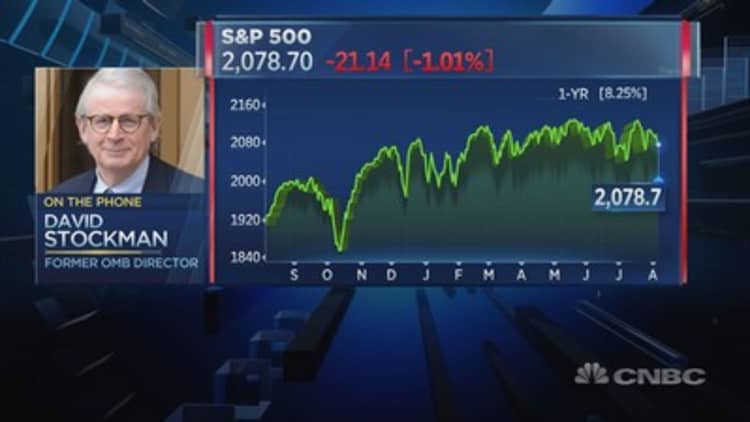Falling prices aren't just a European or Japanese problem; deflationary forces are starting to intensify across Asia, economists warn.
"The entrenched deflationary trend in [producer prices] has been our single biggest macro concern in Asia," said Chetan Ahya, chief economist for Morgan Stanley in Asia.
"The weakness in aggregate demand is resulting in a feedback loop where deflationary pressures are intensifying – as evident in the [producer prices] moving even further into deflation," he said.
Read MoreHow to anger Asia, Fed in one shot: Devalue the yuan
China, which is at the heart of the region's deflation challenge, has seen 41 consecutive months of falling producer - or wholesale - prices. In July, the country's producer prices index (PPI) fell 5.4 percent from a year earlier, the worst reading since late 2009, during the aftermath of the global financial crisis.
Over the past nine months, PPI deflation pressures have reached nine out of ten economies in the region. Indonesia is the only country that continues to see rising factory gate prices.
The feeble pricing environment for producers should be taken seriously. An inability to adequately pass on costs to consumers will crimp margins for companies that are already sitting on excess capacities. If consumers follow by cutting down on consumption, growth will suffer.
"This deflationary trend is weighing on corporate revenue and profit growth in the region," Ahya said.
Corporate profit growth in Asia ex-Japan averaged 3 percent between the first quarter of 2013 and the first quarter of 2015, considerably lower than the average of over 17 percent between 2005 and 2007, before the financial crisis.
Explaining Asia's deflation problem
Global metals and agriculture products are on a multi-year downtrend, while energy prices, after stabilizing for a few months, are heading down again. Ongoing supply side developments such as Iran's potential oil production boost and demand conditions in China suggest that the weak commodity environment is here to stay, said Taimur Baig, chief Asian economist at Deutsche Bank.
But while weaker commodity prices are contributing to the lower producer prices, this is not the full story. Sluggish demand and excess capacity are also problems, says Morgan Stanley.
Read More
"In the first three years after the credit crisis, the credit-fueled capex (capital expenditure) buildup in the region did drive strong GDP (gross domestic product) growth outcomes in the region," Ahya said.
"However, exports growth has not recovered back to the pre-crisis trend. Thus, since 2012, the region has been suffering from the problem of excess capacities," he added.
Tackling deflation

In order for Asian economies to break free of the deflationary cycle, policymakers need to cut interest rates further to give the private sector incentive to borrow for productive investment, the bank said.
"There have been encouraging steps in the form of an accelerated pace of monetary easing in recent months," Ahya said, referring to the People's Bank of China's surprise devaluation of the yuan last week.
The PBoC's move, seen as part of an effort to boost the country's trade competitiveness, has had a ripple effect across emerging markets.
On Wednesday, Vietnam devalued the dong for the third time in a year, in some measure on concerns that a cheaper renminbi could undercut the competitiveness of its exports in global markets. Following in Vietnam's footsteps, Kazakhstan - which also counts China as a top trading partner - on Thursday said that it would allow the tenge to float freely, triggering a 23 percent plunge in the currency.
"Still, the incoming data on inflation suggest that the deflation challenge in the region remains alive. Consequently, real interest rates in the region remain high," Ahya said.
Restructuring of industries with excess capacities also needs to be carried out, Ahya noted, but this will be a lengthier process.
"Arguably, this is the key challenge for policy makers – taking it on will give rise to an immediate issue of potential unemployment," he said.


